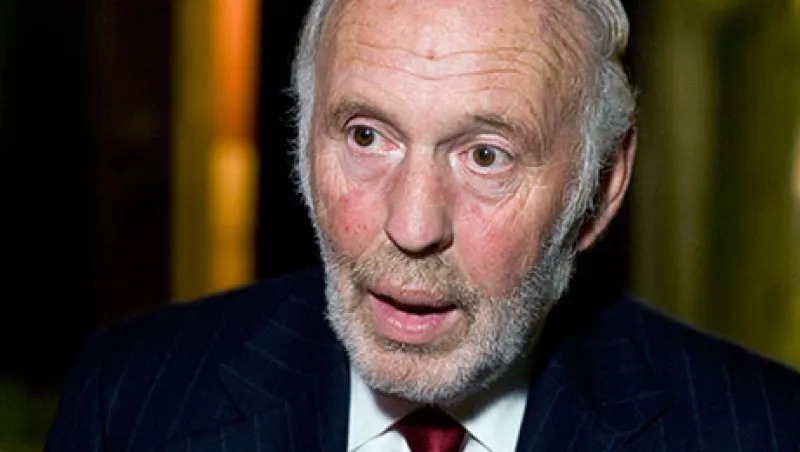Renaissance Technologies, whose founder James Simons topped Institutional Investor’s Alpha’s Rich List this year, has long been considered the premier quant firm — and never more so than in an era in which quants rule, as they do now. But even Renaissance stumbles occasionally, as it did most recently in June.
Three funds run by $50 billion Renaissance Technologies fell between 2.5 percent and 4.5 percent during the month, according to individuals familiar with the performance. The three funds, which drew in more than $3 billion in fresh cash from investors during the first five months of this year, remain in the black for the year after double-digit gains in 2016.
The Renaissance Institutional Equities Fund, the oldest and largest Renaissance fund that is open to outside investors, lost 2.5 percent in June, leaving it up 7.8 percent for the year. It gained 21 percent in 2016. Renaissance Institutional Diversified Alpha Fund, launched in 2012, fell the most. It was down 4.5 percent in June, but is still up 8.5 percent this year after gaining 10 percent last year. The newest of the three, the Renaissance Institutional Diversified Global Equity Fund, a market-neutral fund that came out of the gate last year, was down 3.4 percent in June. Even with the drawdown, however, it’s up 11 percent for the year.
Hedge fund insiders say that quant funds, whose trading profits typically depend on volatility, have been hurt by what has been a surprisingly steady market environment in the second quarter, most notably in June, when the CBOE Volatility Index, or VIX — which reflects investors’ views of expected stock market volatility — gained between 10 percent and 12 percent, half of its 52-week highs. The Republicans’ failure to pass a health care bill, a steady drumbeat of news about the Russia-Trump investigation, and nuclear missile tests of North Korea did little to jar investor confidence in the stock market. The S&P 500 gained 0.6 percent during the month, putting it up 9.3 percent this year.
That said, Long Island-based Renaissance so far has done particularly well in the Trump era. Simons, who retired in 2010, last year earned $1.6 billion (and is the only hedge fund titan who has made the Rich List in each of its 16 years). Since Simons retired, the firm has been run by co-CEOs Peter Brown and Robert Mercer. A prominent Republican Party financier associated with the far-right faction of the party, the reclusive Mercer last year gained notoriety for his successful behind-the-scenes efforts to put President Trump in the White House, as well as his ownership of controversial website Breitbart News and data mining and analysis firm Cambridge Analytica. Brown and Mercer each earned $125 million in 2016.
The owners’ earnings are also driven by Renaissance’s fabled Medallion Fund, which is closed to outsiders. It has earned an estimated annualized return of 35 percent since 1982. In 2014, Renaissance was under investigation by the U.S. Senate Permanent Subcommittee on Investigations for a controversial strategy that boosted Medallion’s leverage nearly 20 to one and turned short-term trading profits into long-term capital gains, saving the firm’s founders an estimated $6.8 billion in taxes. A dispute with the Internal Revenue Service is ongoing.
Renaissance isn’t the only quant to raise new capital this year, although it has garnered the lion’s share. Investors poured $4.6 billion into quant funds during the first quarter, according to Hedge Fund Research. Last year, some $13.3 billion went into quants, though investors pulled $70 billion from hedge funds altogether.







